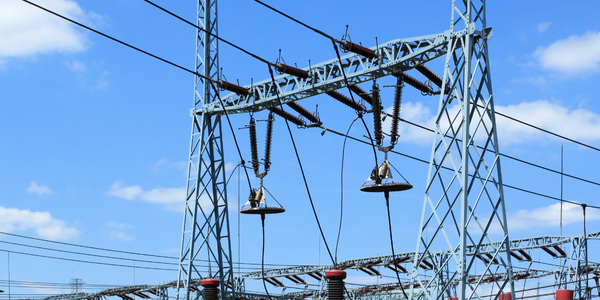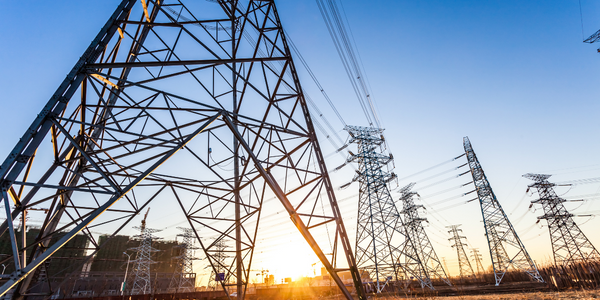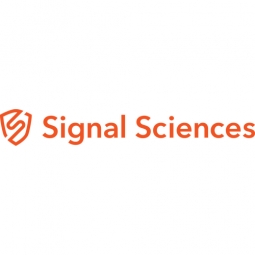Technology Category
- Application Infrastructure & Middleware - Event-Driven Application
- Cybersecurity & Privacy - Application Security
Applicable Industries
- Electrical Grids
- National Security & Defense
Use Cases
- Supply Chain Visibility
- Tamper Detection
Services
- System Integration
About The Customer
Betterment is an online financial advisor with more than $14 billion in assets under management. The company supports a user base of over 380,000 customers who access its online platform. To cater to this large user base, the company spins up numerous web servers daily through its continuous integration and deployment (CI/CD) pipeline. The company's Engineering and Security teams were concerned about the signal-to-noise ratio and needed a solution that could automatically scale and accurately block attacks without increasing support call volume or creating more work for the teams.
The Challenge
Betterment, an online financial advisor with over $14 billion in assets under management and a user base of over 380,000 customers, needed a solution to protect customer PII and financial assets. The company spins up numerous web servers daily through its continuous integration and deployment (CI/CD) pipeline, making it crucial to know if, when, and how their user accounts might be under attack. The biggest concern for Betterment’s Engineering and Security teams was the signal-to-noise ratio. They needed a Web Application Firewall (WAF) that could automatically scale and accurately block attacks without increasing support call volume or creating more work for the teams. The solution also needed to be able to block attacks without requiring ongoing signature tuning or impacting performance.
The Solution
Betterment adopted Signal Sciences to reduce the workload of its Security team by automating deployment and updates, and providing quick access to informed insights without compromising performance. To provision Signal Sciences, Betterment’s Operations team wrote a simple Ansible playbook. This ensured that any new application instance would automatically have Signal Sciences modules and agents installed as a part of its CI/CD pipeline. Signal Sciences provided robust security coverage out of the box that could block malicious requests without impacting the performance and availability of the application or increasing Betterment’s attack surface. The solution also provided easy-to-use dashboards for visibility, surfacing and reporting any detected vulnerabilities to the respective team for timely remediation. Additionally, Betterment used Power Rules to prevent attacks against their unique application logic and keep financial data safe.
Operational Impact

Case Study missing?
Start adding your own!
Register with your work email and create a new case study profile for your business.
Related Case Studies.

Case Study
Hydro One Leads the Way In Smart Meter Development
In 2010, Ontario’s energy board mandated that time-of-use (TOU) pricing for consumers be available for all consumers on a regulated price plan. To meet this requirement, Hydro One needed to quickly deploy a smart meter and intelligent communications network solution to meet the provincial government’s requirement at a low cost. The network needed to cover Hydro One’s expansive service territory, which has a land mass twice the size of Texas, and its customers live in a mix of urban, rural, and remote areas, some places only accessible by air, rail, boat or snowmobile. Most importantly, the network needed to enable future enterprise-wide business efficiencies, modernization of distribution infrastructure and enhanced customer service. To meet these needs, Hydro One conceptualized an end-to-end solution leveraging open standards and Internet Protocols (IP) at all communication levels. The utility drew upon industry leaders like Trilliant to realize this vision.

Case Study
Selling more with Whirlpool
Whirlpool wanted to add connectivity to appliances and transform the company's relationship with customers. Traditionally, Whirlpool interaction with customers was limited to purchases made once every ten years. Connected washer and dryers provide exciting new features like remote management of start times and inter-machine communication.

Case Study
SAS® Analytics for IoT: Smart Grid
Companies face falling revenues, rising infrastructure costs, and increasing risk of outages caused by inconsistent energy production from renewable sources. Less money is coming in as more people and organizations take steps to curb their energy use. Utilities are paying more to maintain and build infrastructure due to increasing complexity, resulting from the rising number of intermittent and variable renewable energy sources connected in the distribution grid.

Case Study
Enel Secures Italian Power Generation Network
Electric energy operators around the world are working to increase the reliability and cyber resiliency of their systems. This includes Enel, a global power company that manages and monitors the Italian power grid. This grid:• Serves 31 million customers• Has a net installed energy capacity exceeding 31 gigawatts• Includes more than 500 power generation plants,including hydroelectric, thermoelectric, and wind• Is managed and monitored by Enel 24/7/365• Is operated by Terna, the Italian Transmission System Operator (TSO)Enel is responsible for the availability of the grid’s underlying ICS and industrial network. It also manages Regional Control Centers and Interconnection Centers which connect with the TSO. The TSO manages the flow of energy to the grid plus controls and remotely regulates the power generation of power plants, increasing and decreasing power production as required. The complex system of interaction and cooperation between Enel and the TSO has strong security implications as well as operational and business challenges.

Case Study
IoT based Energy Quality Availability Monitoring Solution
There were several challenges faced:Since this data would be in the public domain, accuracy and authenticity of this data were of paramount importance. It should be able to withstand scrutiny.It is challenging to build an appliance that can withstand a wide range of voltage fluctuations from as low at 90v to as high as 320v. Since the device would be installed in remote locations, its resilience was of paramount importance.The device would have to deal with poor network coverage and have the ability to store and re-transmit data if networks were not available, which is often the case in rural India. The device could store up to 30 days of data.The platform that deals with the data should be readily available and highly reliable and never lose a packet of data.

Case Study
Data Capture for Afghanistan Forces
Electronic equipments on the field of Afghanistan provided information on the status of the vehicle and to identify potential threats surrounding it to the British Force. The monitoring and interpretation of this data requires robust and sophisticated digitization for data capture and communication.



